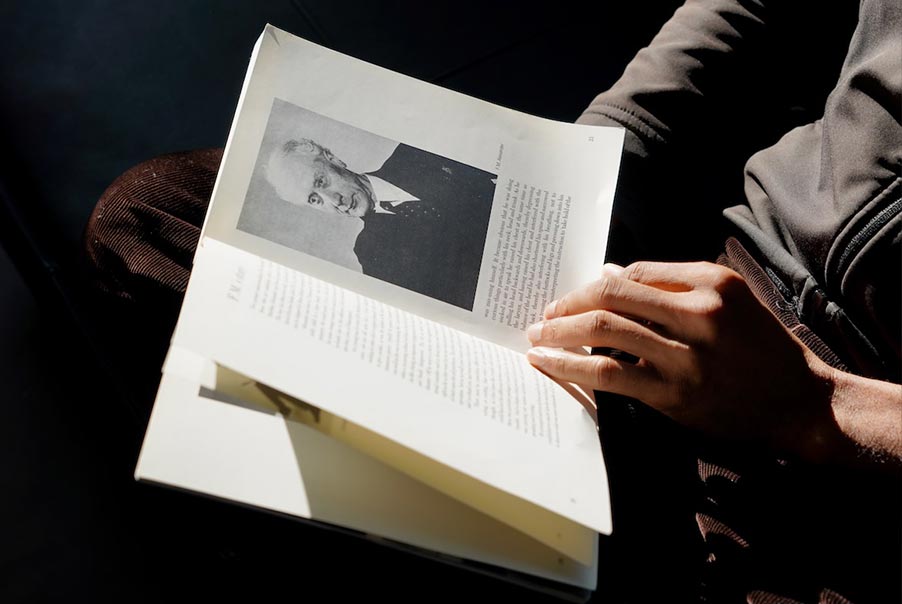What is the Alexander Technique?
The Alexander Technique (AT) is a practical method for self-improvement developed by Frederick Matthias Alexander. It focuses on changing harmful habitual patterns of movement and thought to improve balance, posture, and overall well-being. By learning to observe and change the way we “use” ourselves in daily activities, we can achieve a more integrated, coordinated way of living.
The Alexander Technique fine-tunes awareness and connection between body and mind. Everyday we are bombarded with stimuli to which, on the whole, we react immediately without stopping to think. In fact, many of our problems stem from the fact that we don’t think.
Most of the time we act and react in our own habitual way. Bent on getting the job done, we give little thought as to how we do it and this leads us into bad habits: we tighten our necks, compress our ribcage, tense our muscles, and hold our breath. A.T. zeroes in on what Alexander called the mysterious “critical moment” in your thinking.
The critical moment occurs within the continuous stimulus/response loop happening in your mind. At that critical moment, A.T. attempts to install “new software” in your thinking (within this stimulus/response loop) to choose a better response.
Can you really re-wire your mind? Yes, AT sets a person free from the tyranny of habit and destructive patterns. In its place, A.T. allows for rational, reasoned conscious thinking. This has scientifically been shown to produce marked health benefits.
The Alexander Technique shows someone how to control nature within himself, that is to say, how to control his own reactions to the external world.

WHAT THE TECHNIQUE IS
- A method to restore balance, coordination, and ease by integrating body, mind, and emotions.
- A study of integrated function.
- A way to use the most appropriate energy for any given task.
WHAT THE TECHNIQUE IS NOT:
- A therapy, cure, or remedy.
- Alternative medicine.
- A healing art.
- A religious practice or cult.
- A system of exercise.
The Alexander Technique can be challenging to define—partly because it is often clearer to describe what it isn’t than what it is. It is not yoga, Pilates, Reiki, or chiropractic. It does not involve physical therapy, acupuncture, or Feldenkrais. It is not a spiritual practice, meditation, or religion, although it may encourage mindfulness. Nor is it limited to activities like football, ballet, or sewing—though it naturally finds expression in all of these.
The technique is neither a form of psychological analysis nor an exercise routine. Rather, it is a practical method for aligning the mind and body, offering guidance for how to engage with any activity—or even with rest—with greater ease and clarity.
“Stop doing the wrong things, and the right things do themselves.”

What sets the technique apart is its emphasis on undoing rather than doing. It invites pupils to release ingrained patterns of tension that interfere with natural movement and coordination. Instead of trying to force change, the approach focuses on removing obstacles, allowing the body’s inherent balance to emerge—resulting in greater ease and, often, increased height without any conscious effort to “stand taller.”
It offers a path toward freedom, both physical and mental. As students learn to reduce stress, strain, and rigidity, they often experience profound improvements—not only in movement but also in emotional well-being and clarity of mind.
Though teachers vary in their approaches, they share a common understanding: the technique is not a quick fix or a rigid method. It is not an esoteric practice, but rather a way of reconnecting with the natural ease we knew instinctively as children—something that is simple but not always easy to rediscover.
At its core, the technique is about subtraction—removing unnecessary tension and effort so that movement and thought can unfold without interference. It is not about adding more to life but about doing less—and, in doing so, realizing that less can often be more.
The Alexander Technique is no thing, and every thing at the same time.
“Everyone is always teaching one what to do, leaving us still doing things we shouldn’t do.”
Alexander and His Technique
F. M. Alexander, born in Australia, lived most of his life in England throughout the early half of last century. He was an early proponent of the mind/body continuum and sought to introduce a clear scientific process to address it. In fact, Dr. Nikolas Tinbergen devoted much of his acceptance speech to the merits of the Alexander Technique (A.T.) upon winning the Nobel Prize for Physiology and Medicine in 1973.
Sensory appreciation conditions conception – you can’t know a thing by an instrument that is wrong.

F. M. Alexander co-wrote one of his four books with renowned philosopher Jon Dewey spreading A.T.’s influence to the United States. One of Alexander’s most devout students was the best-selling novelist Aldous Huxley – Huxley even based a character on F. M. Alexander in his book Eyeless in Gaza. In fact, many famous figures of his time including Sir Stafford Cripps, George Bernard Shaw, Sir Charles Herrington, and James Harvey Robinson were avid students. Some of these intellectuals called the Alexander Technique a western shortcut to Zen.
“The Alexander Technique has shown very striking improvements in such diverse things as high blood pressure, breathing, depth of sleep, overall cheerfulness, mental alertness, and resilience against outside pressure. Many types of under-performance and ailments, both mental and physical, can be alleviated, sometimes to a surprising extent, by teaching the body musculature to function differently.”
– Dr. Nikolas Tinbergen, Winner of the Nobel Prize for Physiology and Medicine, Science, 7/5/74
Through a series of lessons with a teacher, pupils learn to observe and change the way they “use” themselves as they engage in the activities of living. With consistent application, they greatly improve their general function. Alexander observed that our responses to the world are often driven by subconscious habits that conflict with the integrated function.

